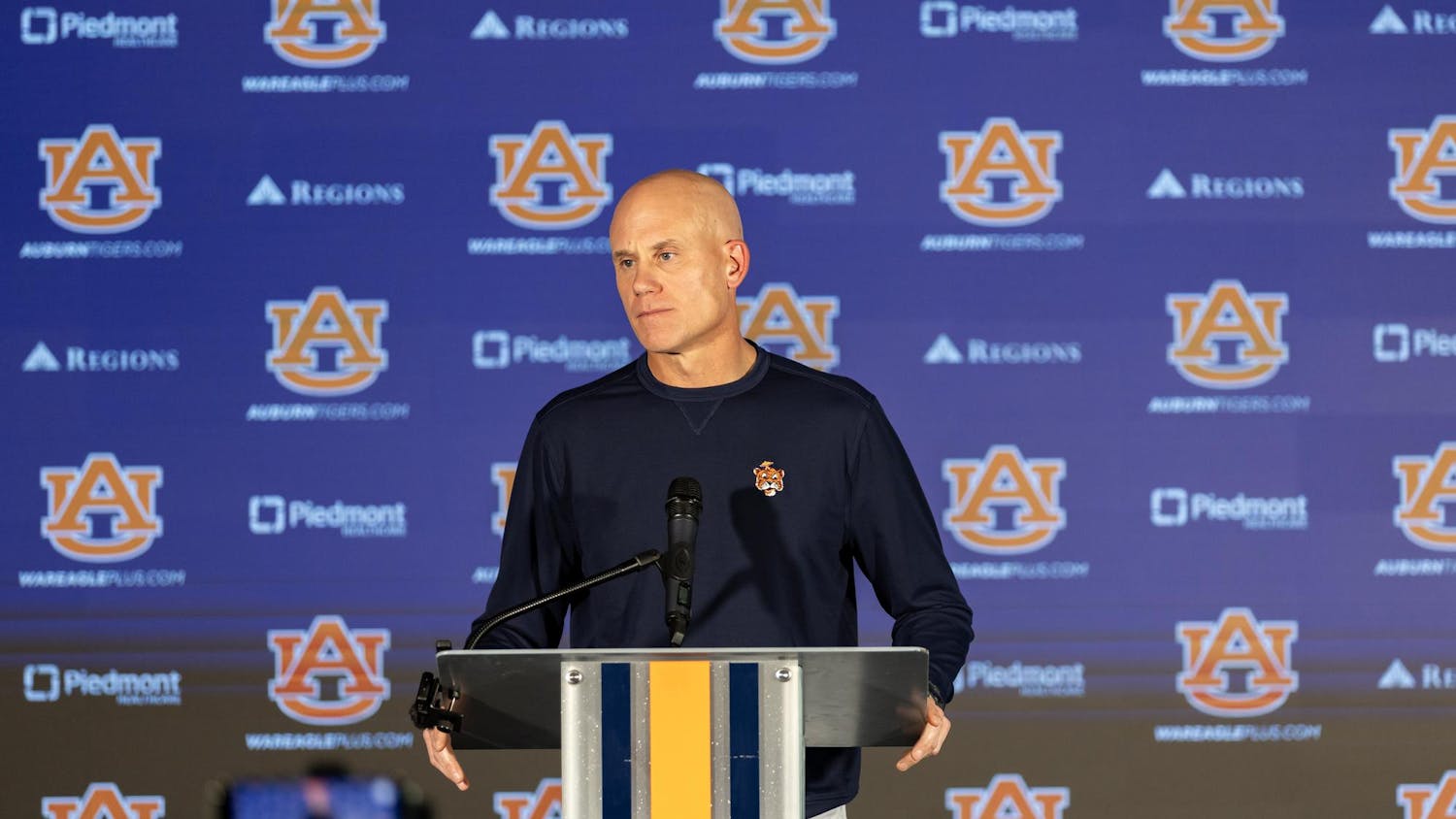Over 200 Auburn residents gathered in the Boykin Center Auditorium to discuss the future of northwest Auburn, an area of the city that houses nearly 3,000 residents, in the first of several meetings being held by the city to collect community input.
Residents and community leaders met to brainstorm for a neighborhood plan currently being developed by the city. Mayor Bill Ham, who was among the crowd, was pleasantly surprised at the turnout.
“It surpassed any number I thought would come,” Ham said.
Ward 1 City Councilman Clemon Byrd, a lifelong resident of the area, said he is eager to see the parks, which are concurrently undergoing assessment by the Parks and Recreation Department, and improved infrastructure within his ward, especially along Highway 14.
“There are a lot of buildings that need attention,” Byrd said. “Some things are just an eyesore.”
For the city, the meeting also served as a chance to clear up any misconceptions about future blueprints.
“[Some residents] had concerns that the city had a preconceived plan of what was going to go on, which wasn’t the case,” Ham said. “The meeting was held absolutely to find out ... what the citizens want to see.”
Auburn Planning Director Forrest Cotten echoed Ham’s statement.
“We very much want the integrity of that neighborhood to remain intact, and so we’re not going to do anything that would go against preserving that neighborhood," Cotten said.
In some neighborhoods across the world, rapid urban development and growth has led to spikes in housing prices, which often results in the displacement of long-time residents who are unable to afford the new living expenses. This effect is known as gentrification.
Williamsburg, a newly hip neighborhood in Brooklyn, saw its rent prices rise almost 80 percent between 1990 and 2014.
But Cotten said that the city’s latest zoning changes, enacted last March, should alleviate fears of rising prices for the 39 percent of the population who rent in the area.
Construction of student-housing apartments is prohibited in the neighborhood. However, apartments for students are encouraged in an area only a few blocks south of the neighborhood north of West Magnolia Avenue and south of Highway 14.
“We feel like we really eliminated that concern of theirs because purpose-built student housing is no longer permitted in any of the zones that cover this neighborhood,” Cotten said. “But we are aware of that concern, we understand it, and we agree with it.”
Ham said that the redevelopment in the area could also have an impact on crime.
“I think the relatively small amount [of crime] that is seen or reported, to a large degree, comes from loitering and hanging out in these dilapidated structures that we hadn’t been able to get clearance to tear down or clean up," he said.
He went on to say that the City Council is also planning on increasing the number of police patrol units all across Auburn.
“I think it’s fair to say that people in this community and all segments of the community appreciate the professional job that our police do,” Ham said.
Byrd, a former police officer, said that a police substation constructed in northwest Auburn would go a long way in improving response times, as well as the relationship between the department and the community.
“When I was on the police force in Auburn, we had a bike patrol unit.” Byrd said. “Everybody on our side of town knew who [the officers] were . . . and [residents] were more comfortable with them because they were in the community everyday.”
To Ham and many residents in Byrd’s ward, the plan is long overdue.
“We had a number of citizens in the northwest Auburn community that contacted their council member ... and said, ‘When are we going to see some things done to this part of town?’” Ham said.
He maintained that previous attempts at revitalization, like a plan put together in 2004, were plagued by absentee or stubborn landowners unwilling to restore their property.
This time, Ham insisted, it's different.
“I think that the city and the city council are committed to moving forward," he said.
The mayor estimates that the plan will take four to six years to be fully implemented.
The next meeting has not yet been scheduled, but is likely to take place in late September or early October.
Do you like this story? The Plainsman doesn't accept money from tuition or student fees, and we don't charge a subscription fee. But you can donate to support The Plainsman.




